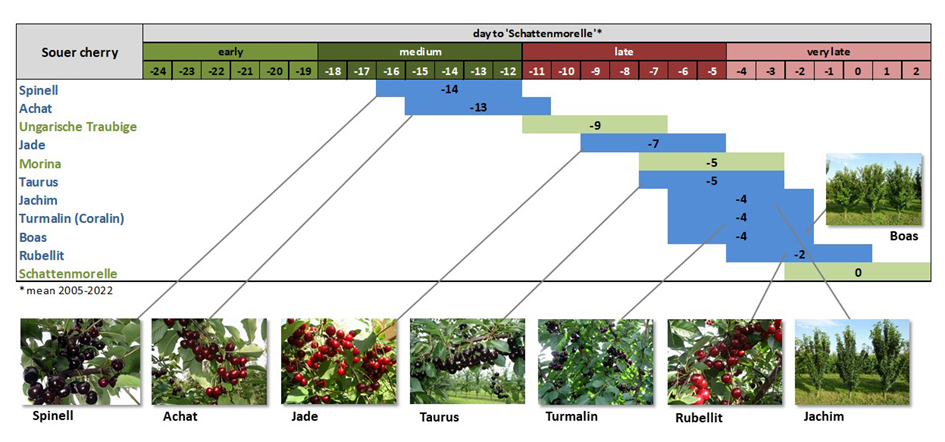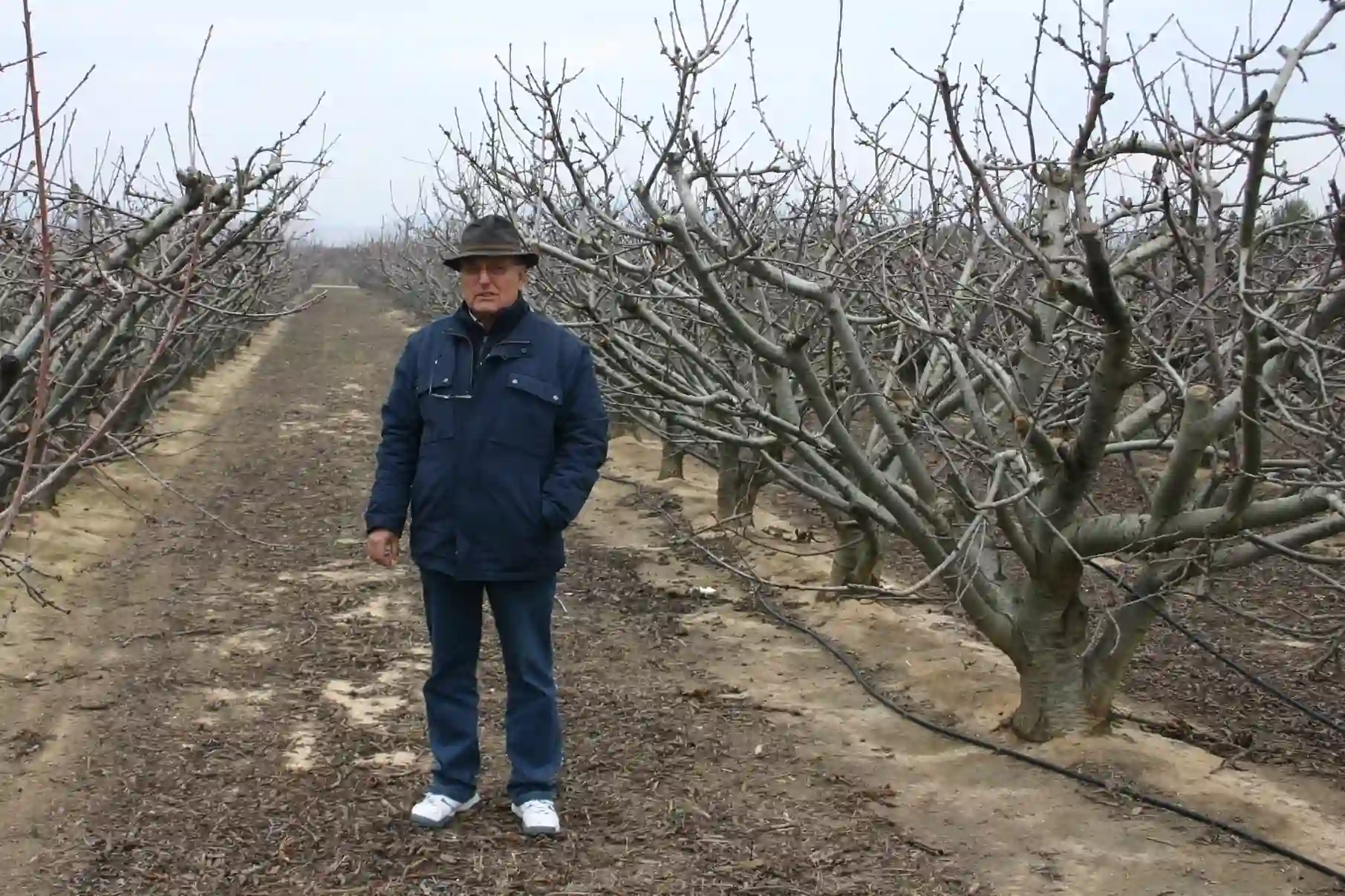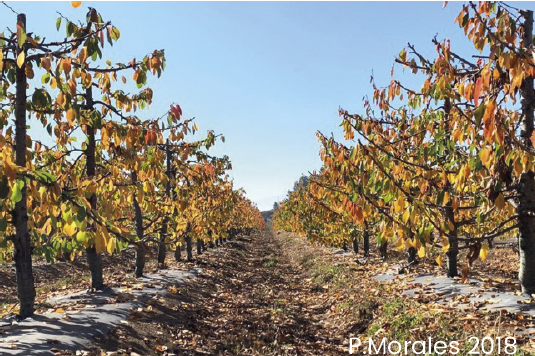The cultivation and breeding of sour cherries has a long tradition in Germany. The first breeding activities are associated with the work of M. Schmidt in Müncheberg and M. Zwitzscher in Cologne-Vogelsang. As a result, the cultivars 'Mailot', 'Cerella', 'Nabella', 'Successa', and 'Bonnie' were selected.
In a second breeding program by H. Jacob in Geisenheim, the two cultivars 'Gerema' and 'Geresa' were selected in 1993. In 1965, a third breeding program was started by B. Wolfram in Müncheberg, which was continued in Dresden-Pillnitz from 1971 to 2000. The success of this breeding work is documented by the cultivars 'Karneol', 'Korund', 'Topas', 'Safir', and 'Morina'.
DSince 2001, M. Schuster continued this program. Eight new cultivars have already been released since 2001, 'Jade', Achat', 'Spinell', 'Turmalin', 'Taurus', 'Rubellit', 'Jachim', and 'Boas'. Two new breeding clones are currently in multi-site testing and 87 clones are in stage II evaluation. The main breeding objectives are fruit quality and fertility, resistance to biotic and abiotic stresses and characteristics for mechanical harvesting of the fruits
 Ripening time - JKI sour cherry cultivars in comparison to cultivars 'Ungarische Traubige', 'Morina', and 'Schattenmorelle'.
Ripening time - JKI sour cherry cultivars in comparison to cultivars 'Ungarische Traubige', 'Morina', and 'Schattenmorelle'.
Mirko Schuster
Institute of Breeding Research on Fruit Crops, Julius Kühn-Institut, Dresden-Pillnitz (DE)
Cherry Times - All rights reserved













